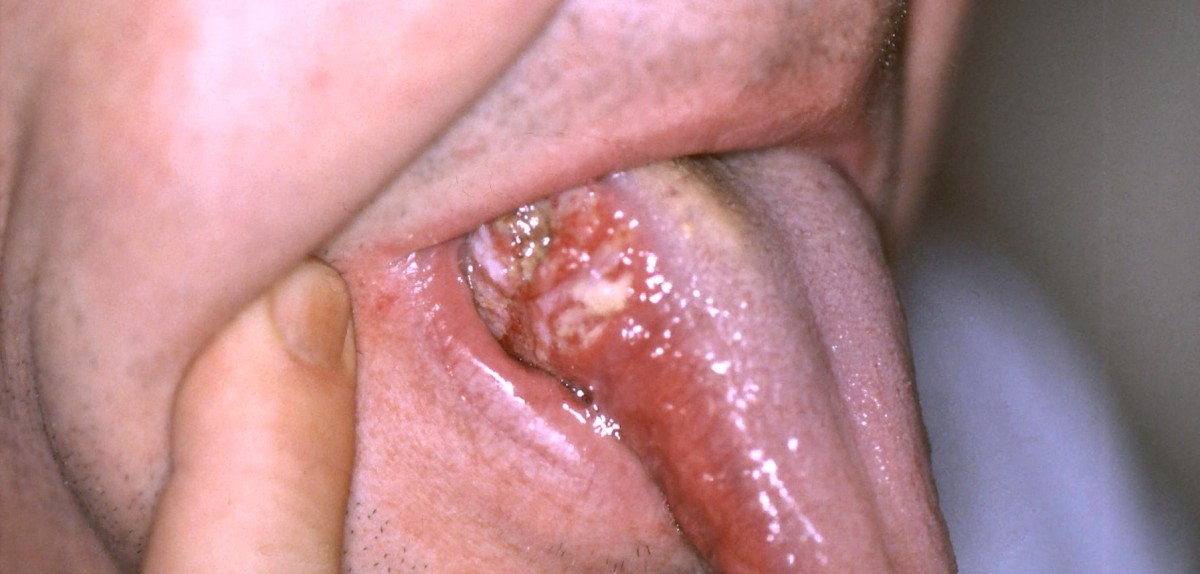About this course
Early detection of oral cancer greatly increases the survival rates. This enhanced CPD/CE course takes you through examining the patient, prevention, and the duties of the practice staff in recognising and reducing the prevalence of this disease.

This course is a GDC Recommended CPD Topic (Oral cancer: early detection).
This course is relevant to the whole dental team.
CPD Time: 90 minutes (1.5 CE Credits)
Customer feedback on this course
- Most interesting and informative. easy to follow.
- An excellent and comprehensive course on the subject.
- Thorough and relevant update on the topic.
- Very useful overview of oral cancer with good practical advice on thorough soft tissue examination.
- A really informative module with great in chair examples of various types of cancers and their presentation.
Assessment: 12 MCQs. Pass mark 75%. more…
On passing the assessment you will immediately receive a GDC-recognised Enhanced CPD Certificate.
Access: You will have access for 12 months, and can take the course as often as you wish in this period.
Aim
The aim of the learning and teaching materials in this course is to allow learners to develop their professional knowledge, understanding and management skills in oral cancer, in line with their identified personal development requirements.
Course objective
• to teach how to prevent and recognise oral cancer.
Anticipated learning outcomes:
The learner will:
• be able to assess the oral cancer risk of a patient.
• be able to reduce the oral cancer risk.
• be able to examine a patient for oral cancer
• know when to refer suspected lesions.
• understand the Practice duty of care with respect to oral cancer.
• through achieving these outcomes, provide an improved level of service to their patients.
GDC Development Outcomes
ABD
Learning content:
Types and Locations of Oral Cancer | Epidemiology | Duty of Care | Soft Tissue Examination | Oral Cancer Prevention | Oral Cancer: Suspicious Features | Homogenous Leucoplakia | Nodular Leucoplakia | Erythroleucoplakia | Chairside Special Tests | The Practice Role | Vaping as Part of Smoking Cessation | Course Completion
View full course description
Oral Cancer - Early Detection
Course Description
Types and Locations of Oral Cancer
This section looks at the various types of oral cancer, including squamous cell carcinoma, adenocarcinoma, lymphoma, and melanoma. It also identifies the most common sites of oral cancer, such as the lateral tongue and floor of the mouth.
Epidemiology
Learn about the global incidence of oral cancer and the risk factors that contribute to its development, including tobacco and alcohol use, as well as the role of Human Papilloma Virus (HPV) in younger individuals without traditional risk factors.
Duty of Care
Dentists have a duty to assess, detect, and document oral cancer risks in their patients. This section emphasises the importance of early detection, noting that early-stage cancers have significantly higher survival rates than advanced cancers.
Soft Tissue Examination
Master the techniques for conducting a comprehensive soft tissue examination using a systematic approach. This section covers extra-oral and intra-oral assessments and highlights key indicators of potential malignancies.
Oral Cancer Prevention
This section discusses preventative measures to reduce oral cancer risk, including smoking cessation, reducing alcohol intake, and promoting a healthy diet. Patients are also advised on limiting sun exposure to reduce the risk of lip cancers.
Oral Cancer: Suspicious Features
Learn to recognise the suspicious features of oral cancer, including white patches, red-and-white patches, persistent ulcers, and unexplained lumps. This section provides guidance on when to refer patients for further examination.
Homogenous Leucoplakia
This section covers homogenous leucoplakia, a white lesion in the oral mucosa that may develop into cancer. Regular monitoring and biopsy are necessary to assess the risk of malignant transformation.
Nodular Leucoplakia
Nodular leucoplakia presents with a nodular or warty appearance and carries a higher risk of malignancy. This section emphasises the importance of early detection and biopsy to prevent progression to cancer.
Erythroleucoplakia
A combination of red and white patches, erythroleucoplakia is a pre-malignant lesion. This section explains the importance of antifungal treatments and biopsy to monitor potential cancerous changes.
Chairside Special Tests
Look at the use of chairside tests such as Toluidine Blue staining and autofluorescence to aid in the detection of pre-malignant and malignant lesions. While these tools can assist in identifying suspicious areas, their effectiveness as screening tools is limited.
The Practice Role
Dental practices play a very important role in the early detection of oral cancer. This section provides guidance on developing protocols, conducting risk assessments, and ensuring proper referrals for suspected oral cancer cases.
Vaping as Part of Smoking Cessation
This section discusses the role of vaping in smoking cessation, highlighting the Royal College of General Practitioners' position on e-cigarettes as a tobacco-free alternative. It also warns about the dangers of illicit vaping products containing THC and Vitamin E-Acetate.
Course Completion
Participants will take a multiple-choice exam and receive a GDC-compliant CPD certificate upon passing. The course emphasises the importance of early detection and prevention of oral cancer through thorough patient examinations and risk assessments.
You can copy and adapt this example PDP entry for your own needs and circumstances. The format complies with GDC guidance on PDP structure.
| PDP Learning or Maintenance need |
| Oral cancer |
| How does this relate to my field of practice? |
| Improve my recognition and management of Oral Cancer |
| Which development outcome(s) does it link to? |
| A B C D |
| What benefit will this have to my work? |
| Perform tasks that may be required and expected in my profession. |
| How will I meet this learning or maintenance need? |
| Take the Verified Learning course on Oral Cancer |
| When will I complete the activity? |